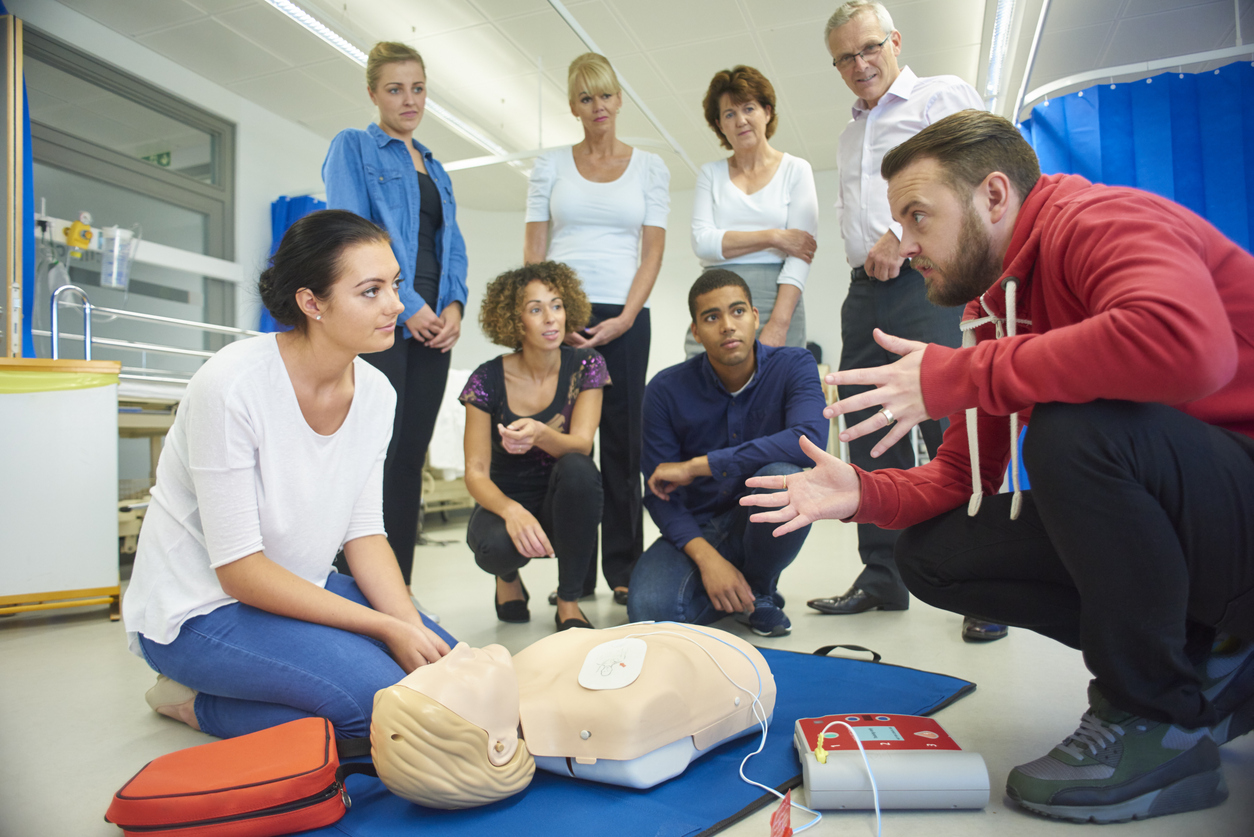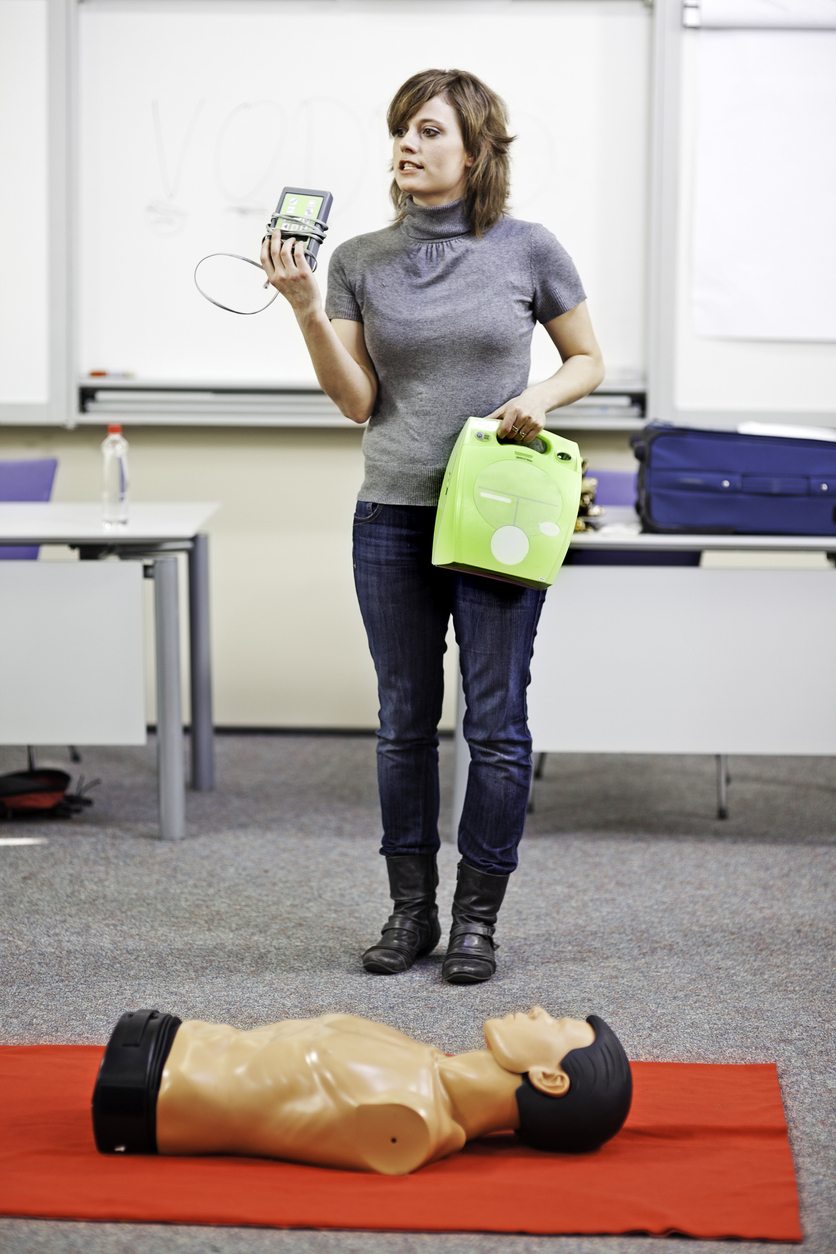Training
Have a Look at Our
Training Classes and Details
We’re ready to enroll you in the classes posted through the Enrollware Portal listed under “View Class Schedules.” If you have questions before you book, please feel free to email us or give us a call. Our highly trained staff can assist you with your expertise and location. We look forward to working with you.
-
Cardiopulmonary Resuscitation (CPR)
-
First Aid
-
Automated Electronic Defibrillator (AED)
-
AED Installations and Sales
-
Blood-borne Pathogens
-
Basic Life Support (BLS)
-
Fire Safety
-
Emergency Medical Responder (EMR)
-
Wilderness First Aid
-
Babysitting (virtual or classroom)
-
Instructor Training in all disciplines
-
Clock hours for Missouri Dept. of Health and Senior Services (MO DHSS)
Swift Safety Institute
Become a CPR Instructor
Welcome to the wonderful world of teaching your community a life-saving skill! Here at Swift Safety Institute, we provide high-quality CPR and First Aid courses to a wide variety of audiences. We pride ourselves in contracting only the best instructors in the industry. To become a CPR instructor, you need to ensure that you are prepared and ready to instruct. Here are some aspects to consider below.

Should I Become a Certified CPR Instructor?
Certified cardiopulmonary resuscitation instructors (CPR) coordinate and lead classes that teach proper procedures to revive a person experiencing a breathing or heart function emergency. Instructors also teach courses like First Aid, Basic Life Support, and can elect to also teach courses like Pet CPR, Wilderness First Aid, Emergency Response, and babysitter CPR, just to name a few.
Their job duties include coordinating class times and locations, transporting and cleaning equipment, evaluating student performance, and ensuring the completion of required paperwork. CPR Instructors often work for the Health and Safety Institute (HSI), the American Heart Association (AHA), or the American Red Cross (ARC). Instructors can make their own schedules, but they often teach classes during the evenings and weekends in order to meet students’ scheduling needs. Instructors must do some heavy lifting to move class equipment, like CPR manikins. Another crucial part of teaching successfully is the ability to speak well in public. Instructors must also be proficient in using technology. Key skills, like making spreadsheets, word processing, and email communications are required to conduct successful courses. You will also have skills in customer service, holding presentations, physical dexterity to perform CPR, and knowledge of the Microsoft Suite.
What are the Requirements to Obtain My Licensure?
You will need to obtain a basic level certification in CPR. Once this is completed, you can apply to the instructor course in the discipline you choose to teach. Are you wanting to teach in the medical community? Then Basic Life Support (BLS) is a great fit for you. What about the public and your community, schools, and child daycare centers? Then go for a basic CPR and First Aid license. Things like Pet CPR are elective courses to teach. After you complete the basic CPR certification, you will need to go through the Instructor Level course. These usually present in a combination of online and in-person skills check formats. Swift can start you with our Instructor Development Course (IDC) with HSI, the Train the Trainer course with AHA, or an Instructor Trainer course for Red Cross. You will re-certify these licenses every two years.


What Are the Costs to Become an Instructor?
The cost depends on your goal. First, you must acquire the certifications for basic CPR or BLS. Then you must consider things like are you working with a site that provides manikins and supplies? Or are you working for an organization where you would provide your own equipment? Most places that you teach/contract for will not provide the manikins and supplies for their Independent Contractors. Some places will let you rent their equipment for your classes. If you must purchase your equipment, make sure you utilize places like eBay and Craigslist. We recommend that you buy a decent set of used equipment to get started. Don’t go all out and get fancy until you start to book your classes more frequently and can invest more into that. We can recommend some brands that are cost effective and meet the minimum requirements.
Are You Ready to be an Independent Contractor?
As an Independent Contractor, you will be given a 1099 tax form at the end of the year by each company that you work for. When you’re self-employed, you don’t have an employer to withhold and send in taxes for you, so you’ll have to take care of this yourself. You’re responsible for making estimated tax payments, and you can send those in quarterly if you choose. From a tax perspective, being an Independent Contractor offers several tax advantages, although it also comes with added responsibilities. You likely won’t have to pay tax on all of your income because you will be able to deduct business expenses using IRS Schedule C when you prepare your tax return. The resulting number after your business deductions is what you’ll enter on your tax return as self-employed taxable income. You can deduct all expenses that are business-related, such as mileage and supplies.


Set Your Own Schedule and Negotiations.
Setting your own schedule sounds dreamy, right? It is. However, the nature of the business is that most clients want their classes with ever-changing schedules, and this sometimes includes nights and weekends. CPR has spurts of never-ending classes and then nothing. You need to be able to manage your money to offset the slower season. Also, make sure you are aligning yourself with the right business. They all pay differently- some pay by the hour, some by student count, and some are flat-rate pay. You must have a go-get-it attitude to be able to find your classes, locations, and clients, and have flexibility to better serve and retain them. Working for several companies is also fruitful, as you can make more income. You will need to be able to set rates per class for your clients, too.
This is just the beginning of things to be considered for joining the CPR Instructor workforce. Most places will just set you up for the course, take your money, and send you on your merry little way. Here at Swift Safety Institute, we realize that becoming an instructor is easier said than done. We work hard to offer support and answer questions to our fellow instructors. We can help you with almost anything CPR-related. We want you to be successful!
If you take our Instructor course that does not guarantee you will be signed on as an Independent Contractor for Swift, as that depends on our business needs. We can also suggest alternative places for you to align with. The cost for you to take the course is between $200-500. Pricing will vary depending on your licensure. Please reach out to use to get started on your career!
Are You Interested in a Career with Swift Safety Institute?
Swift is growing, and we need great people on board! Think you have the right stuff? Check out our national job postings through Indeed.

Frequently Asked Questions
Our terms and conditions are presented and must be accepted at the time at registration, thus all registered students have reviewed and accepted these terms. Here at Swift, we completely understand that things can happen and emergencies arise. If you have any issues, you can reschedule one time from your original course registration for a nominal fee. Please contact us to reschedule. On a case-by-case basis refunds will be granted to those who cancel 7 days prior to the class date. There will be absolutely no refunds given for instructor courses for any reasons as those reservations are limited. A $35 fee will be incurred with a class transfer request submitted 3 days prior to class or if you had an emergency situation and could not attend your course. There are no transfers granted 2 days prior to class. Only 1 transfer per student, and once a transfer has been completed there will be no refunds granted. Once a class begins, there will be no transfers or refunds.
